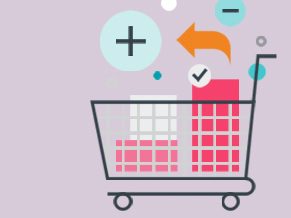How to Combine Content and Commerce: Connecting Their Story with Your Story (and Selling It)
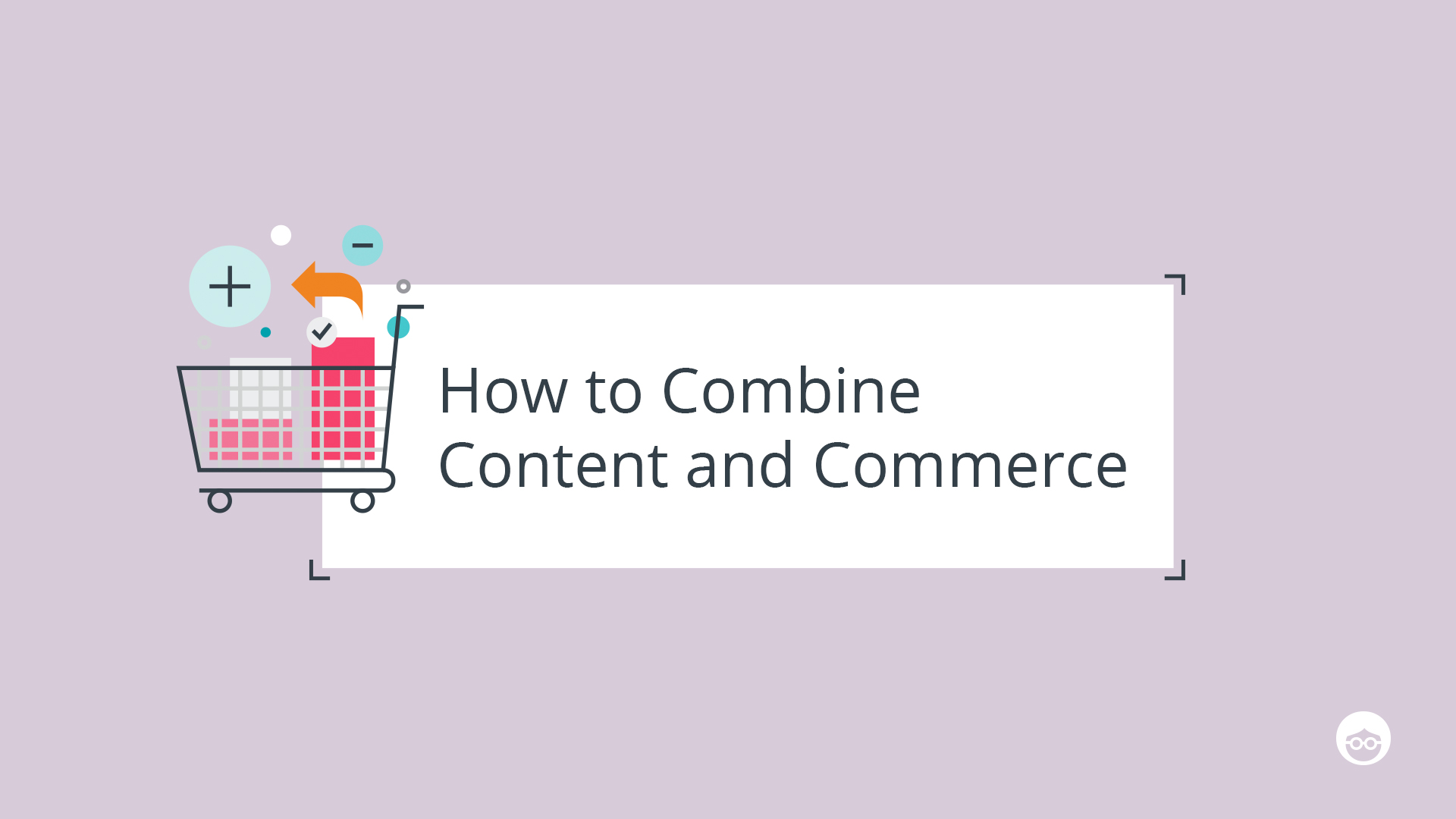
Blame it on my eCommerce roots if you’d like, but every piece of content ought to exist for a single reason: to drive action.
This doesn’t mean every page has to be a sales pitch. In fact, it shouldn’t be. But it does mean every page has to propel your audience toward becoming a customer.
To create effective recommended or sponsored content, this means telling a story that connects directly with the story your reader is already engaged in. A genuine, high-quality piece of content pulls your target audience in with emotion and value.
At the same time, it’s imperative to build that storied content so that it leads directly to the next step a user will take on their journey to conversion. That way, you can lead you user to that next step seamlessly, either through a CTA … or any other means available.
For e-commerce companies using recommended content, the answer to this dilemma lies in providing high-quality editorial/storytelling with high quality best practices for conversion optimization that will help bring people through the funnel faster.
Naturally, merging content and commerce in a way that resonates with your audience can be tricky — and, sadly, a misstep combining content and commerce can lead to a less-than-pleasing user experience — but here’s how you can get there.
1. Find The Right Audience
Effective sponsored content bridges the gap between a casual browsing experience and a buying experience.
For example, if you’re on a women’s magazine site like Cosmopolitan or Glamour and you see a sponsored article with makeup or relationship tips, that’s a natural extension. Alternatively, think about being on a men’s magazine site like GQ or Esquire and bumping into a link about men’s fall fashion or workout hacks.
The point with both is to get your sponsored content in front of the appropriate audience and extend the story that they’re engaged with already.
This means stacking your content into two stages: first, content that moves them deeper into the story — meaning the topic or need they’re exploring— and second, providing a resolution to that story in the form of a purchase.
Content that only drives readers deeper into the current story with no logical next step makes you helpful, but not profitable. But trying to shortcut the process by jumping into a resolution and purchase immediately also makes you too heavy-handed.
Two of Outbrain’s targeting features can help you nurture a user in more effectively.
The first feature is Custom Audiences, which lets you marry content marketing and retargeting. The ability to retarget recommended content puts your content-meets-commerce pages in front of people who have already been exposed to your brand or product. They’re prequalified and simply need a friendly extra tap to become full-fledged customers.
Home décor retailer One Kings Lane did this by driving retargeted users to their online magazine Style Guide on sites like Better Homes and Gardens and Southern Living. This tactic increased their conversion rates 4X and lowered their customer acquisition costs by 50%.
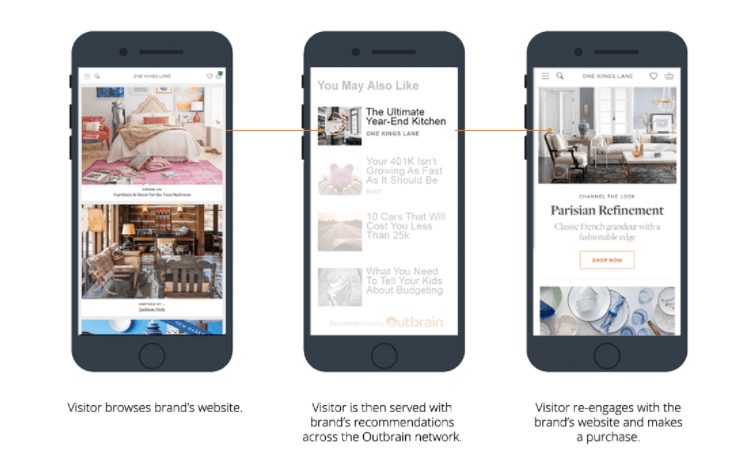
The second Outbrain targeting tactic is known as “story sequencing.”
Story sequencing lets you control the order in which recommended content appears to readers. For example, e-commerce brands often choose to start their story with a piece of earned media like a review from an influential blogger or press coverage from a product announcement, as it can be a highly effective way to establish credibility and trust. Later, they might choose to pull them in with owned content from their blog that is deeper in the funnel.
Outbrain’s story sequencing allows brands to architect a content experience with multiple pieces of content that nurtures users down the funnel.
Top-of-the funnel visitors might see traditional articles but bottom of the funnel users may see content-meets-commerce pages. And even if some of those content pieces are not owned, the content is measurable at every stage.
2. Create High-Value and Effective Content
While segmenting your audience means you can more effectively drive purchases, what kind of ecommerce content is most effective in nurturing users to conversion? How do you pull readers in and engage them and get them to take the next step to purchase?
First of all, don’t make your audience mad by “tricking” them with pages that aren’t relevant to your ad’s image or headline. Always deliver value.
If it’s too salesy earlier on — or if it feels like clickbait — you’ll lose conversions. This applies both to content that is too sales-focused immediately in the funnel as well as the page itself. Even on a content-meets-commerce page, you still need to build toward “the ask.”
A great example of content-meets-commerce is fashion brand Reiss. Reiss’ work with Outbrain focused on driving traffic to a select number of high-impact blog pages.
Their hypothesis revolved around the question of whether or not these content rich pages would result in measurable purchasing changes.
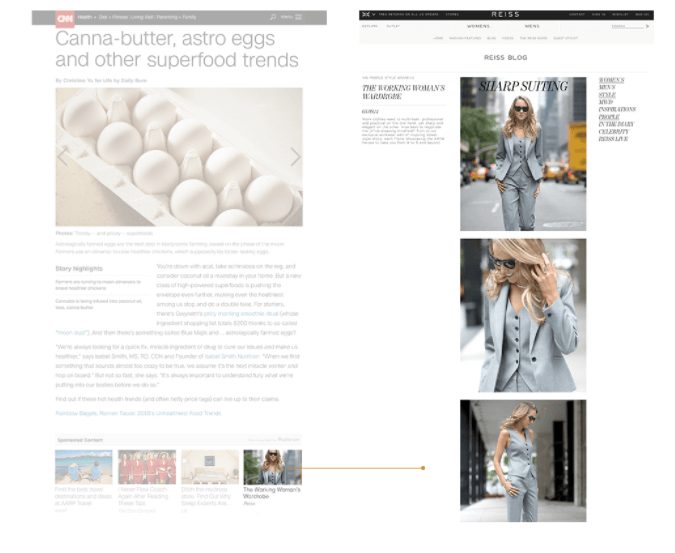
The results were powerful. After 66 million impressions and 87 thousand click-throughs, the campaign delivered a 36% increase in average order value.
However, the content Reiss drove traffic to still relied on visitors to take an additional few step to become customers. For example, while the featured blog post contained a potent mix of helpful content and relevant product images, the only call-to-action on the page was an invitation to “PROCEED” to their store:
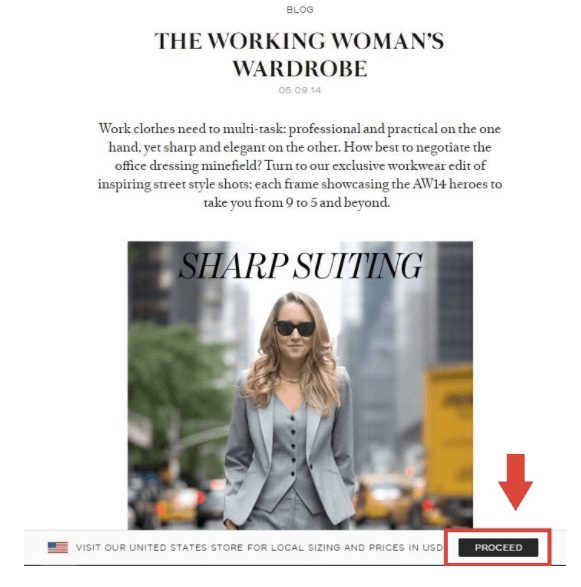
The CTA is generally what ecommerce brands lean into. But it also means they still rely on visitors to take this leap themselves. Is there a better way?
Yes. And this is our last tip. The easiest way to shorten the funnel is by adding unobtrusive calls-to-action next to your products within recommended content itself.
Don’t misunderstand me. This does not mean sending your visitors to overt sales pages. Remember, the point of recommended content is just that: to recommend content.
Instead, tools like Shopify’s embeddable “buy” button lets you add buttons — linked directly to your ecommerce store — on platforms like WordPress, Joomla, Drupal, and Tumblr. The code itself is editable, so you can match your site’s aesthetics as well as customize your calls-to-action:
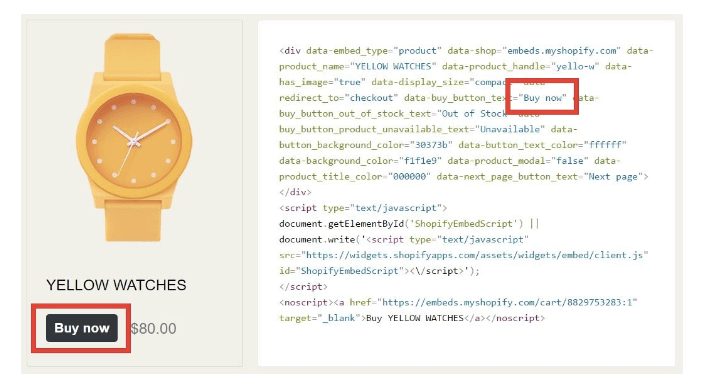
This enables brands to shorten the funnel and allows potential shoppers to become buyers much more seamlessly.
Let Content and Commerce Collide
To create effective recommended or sponsored content, you need to be strategic about nurturing your potential audience all the way down the funnel.
Whether it is through retargeting or story sequencing, the content you create and the story you tell needs to be the focus. Consider the buyer journey every step and make sure that you are leading them to the path to purchase as seamlessly — and as non-anger-inducing — as possible.


